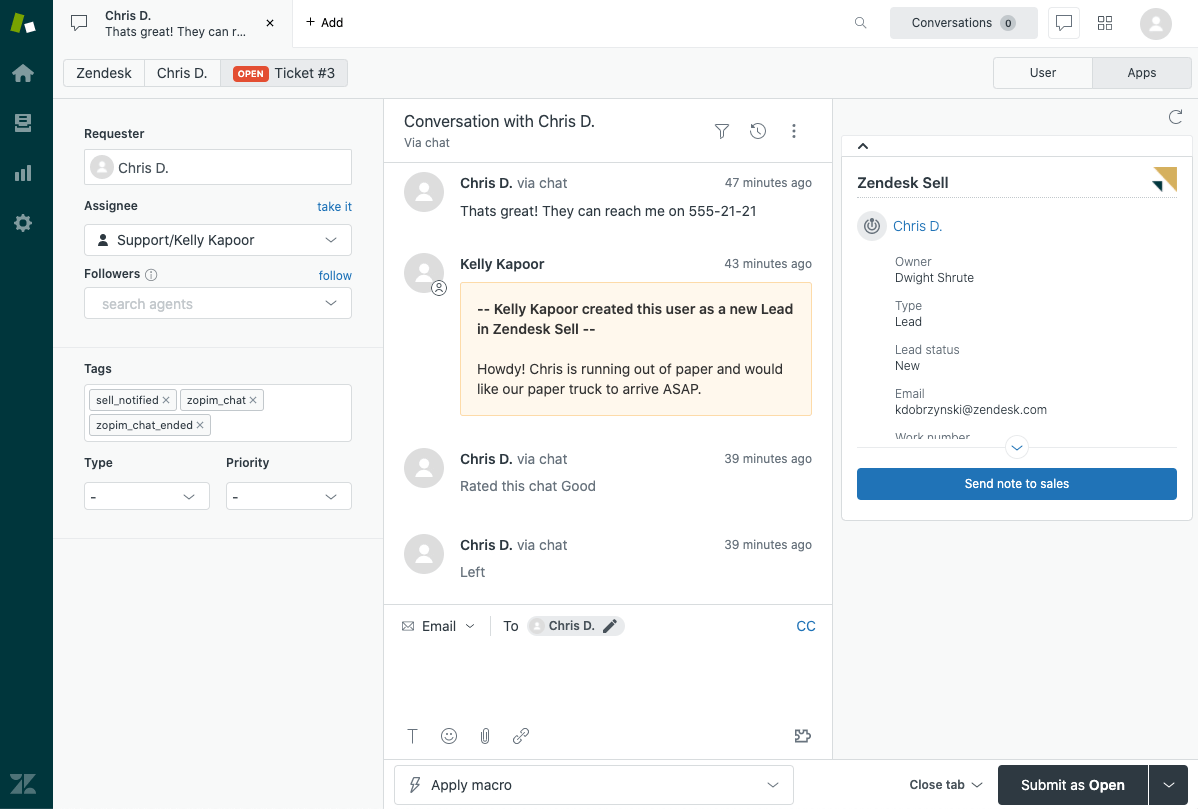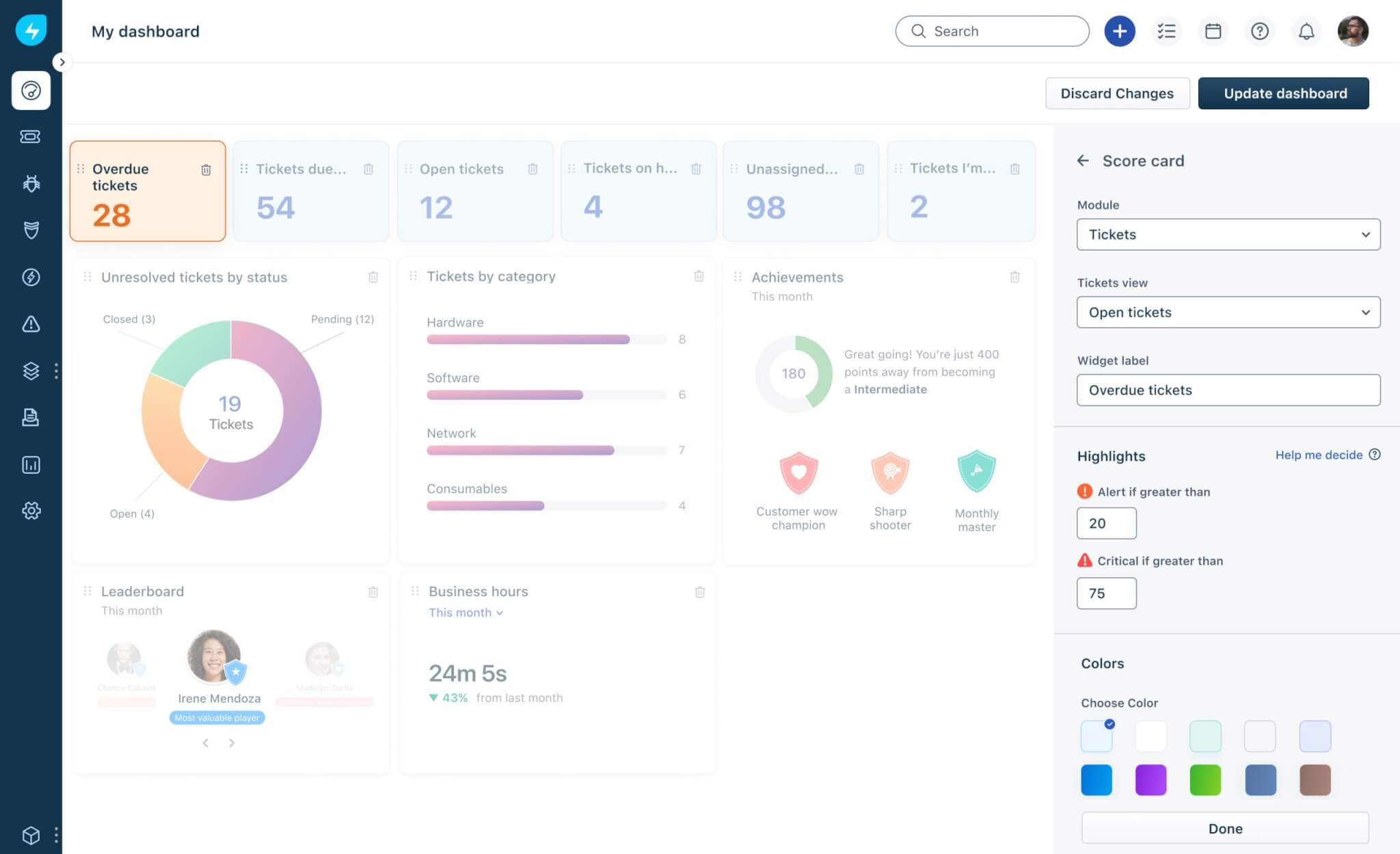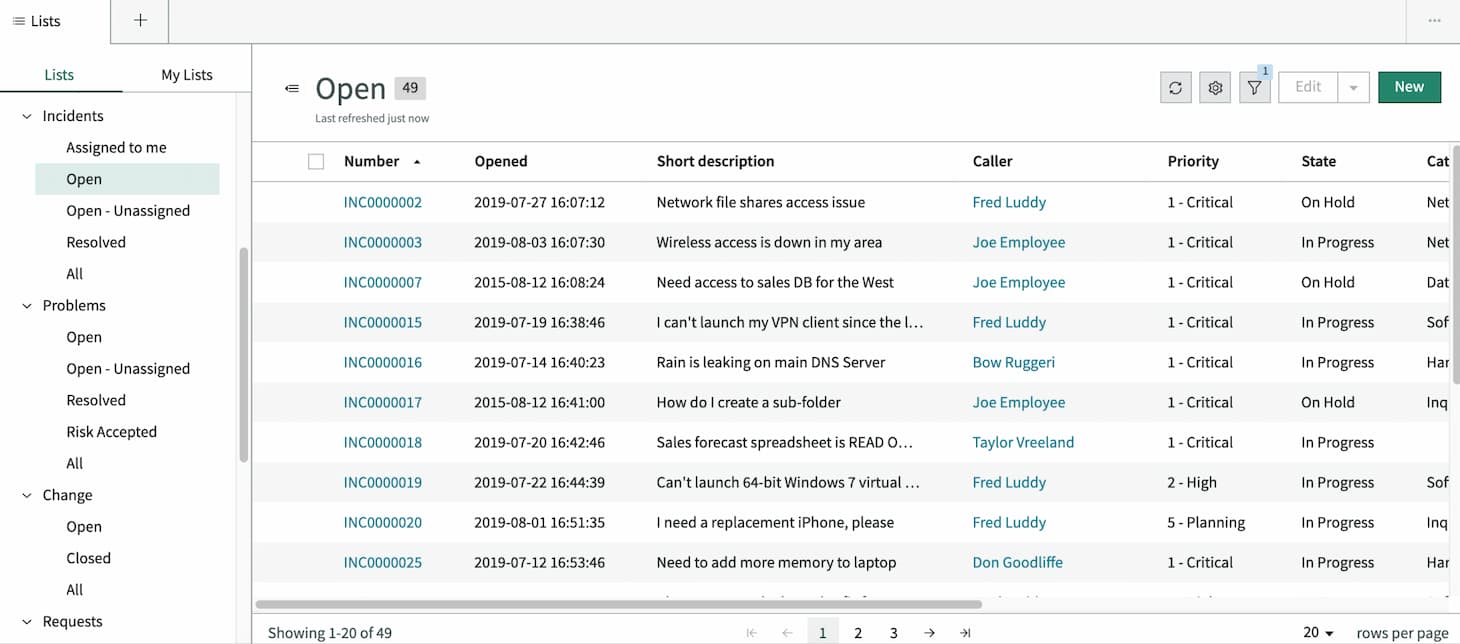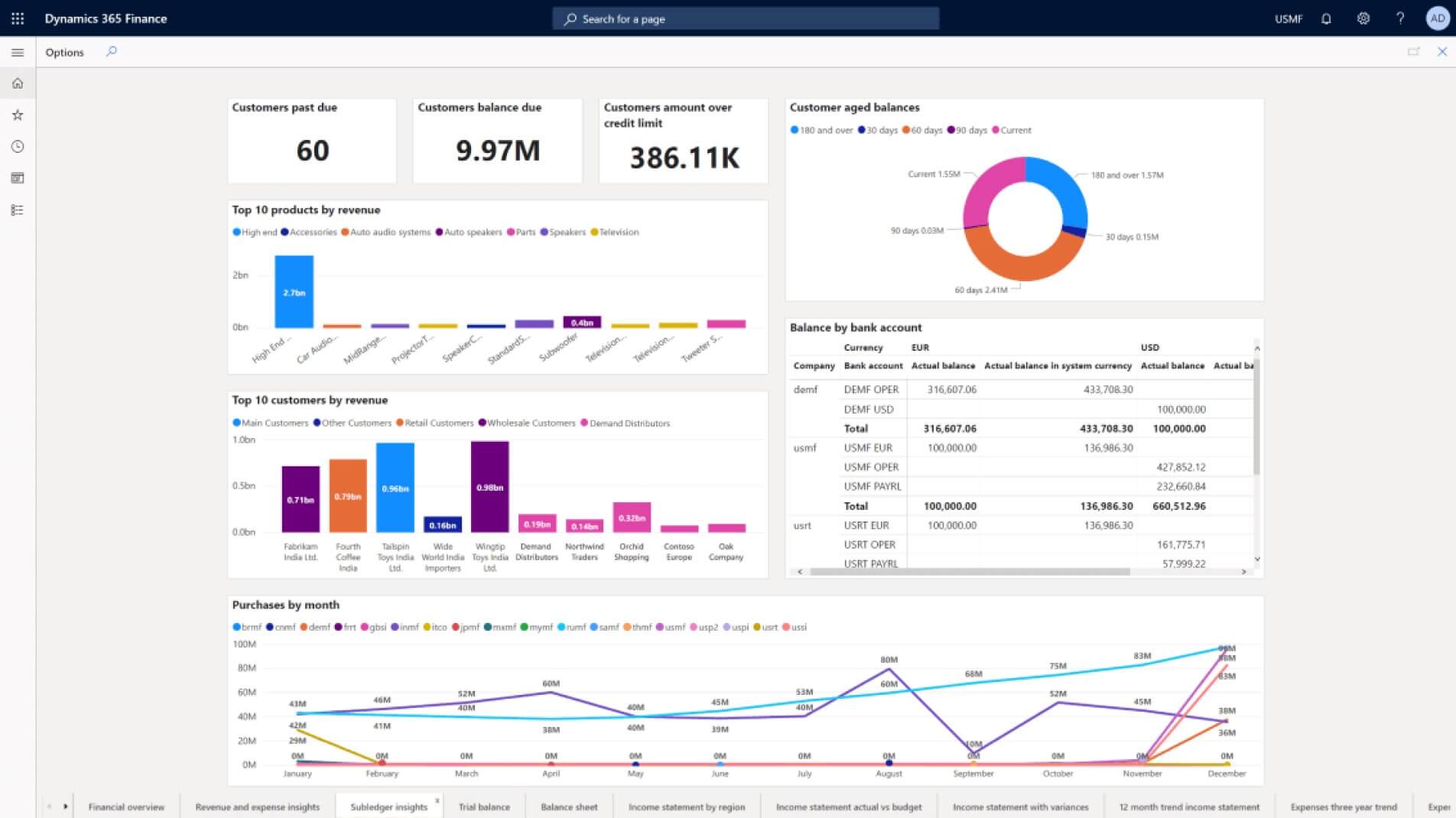Running a growing IT business these days has its fair share of challenges. As more customers come knocking, wait times get longer, cases fall through the cracks between support teams, and problems take forever to solve. Customer dissatisfaction soon follows, threatening business growth. Due to these resource strains, other business units may not get adequate IT assistance, either.
Luckily, in 2026, help desk software for IT companies will be here to assist. These systems can help your teams work better together and respond faster. They provide one convenient service desk platform where your staff can handle customer issues as well as offer technical assistance to in-house departments.
In this article, we’ll walk you through what an IT help desk does, introduce the best ITSM software and help desk solutions, and discuss why businesses should invest in IT support service management.
What Does an IT Help Desk Do?
An IT help desk is the company’s 911 dispatch center for all IT-related requests, both internal and external. It’s a one-stop shop equipped to handle all sorts of requests, whether a support agent needs help accessing a SaaS application, a customer forgot their account password, or a server crashes overnight.
This service desk software helps troubleshoot issues, diagnose root causes, and guide users in fixing issues independently. What’s more, if a problem requires higher skills, help desk agents can escalate it to specialized IT teams like system administrators or application developers.
What makes the best IT help desk software uniquely efficient is that it helps IT teams and end-users. The key functionalities of helpdesk tools are:
- Providing a single point of contact for internal and external customers
- Delivering answers to customers' queries by tickets or self-service options
- Off-loading support reps’ agendas by task automation
- Introducing workflow guidance to simplify solving customer issues
- Analyzing and improving customer experience and satisfaction
With these benefits, helpdesk software is a game-changer for any business.
Choosing the best help desk software for IT companies can improve the satisfaction of your clients. Yet, the choice can cause a lot of headaches, so we've compiled the 10 best help desk software for IT companies to save you trouble. These are the 10 best help desk services for information technology companies. If your business isn't IT-related, don't worry. These help desk companies have customer service software that will work for any company. After all, customer support has encompassed the traditional channels of phone calls, emails, and office visits. Let’s see how they fare with service software, helpdesk ticketing system, and more.
An IT help desk is critical to IT service management (ITSM).
IT Service Management (ITSM) Tools and Their Role in ITIL Processes
Help desks respond to user requests and troubleshoot problems, whereas service desk software or IT service management software coordinates broader processes. It integrates efforts around ticketing, development, operations, and security. Beyond troubleshooting, ITSM software also monitors performance, updates systems, and enhances IT support service quality over time.
There is a strong connection between ITSM and ITIL, or IT infrastructure library—an umbrella term for a set of best practices companies should follow to improve their IT services. Specific ITIL guidelines include:
- Incident management. Providing timely and effective support through predefined help desk ticketing workflows.
- Problem management. Identifying and addressing the root causes of incidents to prevent disruptions.
- Change management. Standardizing processes for scheduling/approving system changes to minimize disruption.
Here's how service desk software helps implement key ITIL guidelines.
Incident management
ITSM tools provide the ticketing, categorization, assignment, escalation, and notification capabilities that facilitate smooth incident management per ITIL.
For example, when an end user submits a ticket, predefined workflows automatically route it to the right expert based on the type and urgency of the issue. At-a-glance dashboards allow staff to see open requests and respond promptly. Systems can even detect problems happening behind the scenes and create tickets automatically.
Problem management
But it’s not just about handling issues one-off. ITSM tools analyze trends across tickets to uncover more significant patterns. If requests of the same type are submitted repeatedly, service desk software can provide valuable data to identify systemic weaknesses.
Change management
Software and hardware must be updated with caution to avoid unintended impact. ITSM tools standardize the entire process from proposing a change to assessing risk, scheduling downtime, getting approvals, implementing the change, and reviewing it afterward.
This way, ITIL and ITSM help organizations take a holistic, business-centric view of running support operations and delivering tech to internal teams or external customers.
Why Businesses Need ITSM Tools
Technology is ingrained in nearly everything companies do today. You can easily run into serious problems without the right software to manage all these complex, interconnected systems.
Just imagine if the apps and databases that sales use to manage leads crashed during a busy period. Deals could fall through. Or if the company’s website went down right after a marketing campaign attracted hundreds of interested visitors. Sales opportunities would be wasted.
This is why more and more companies invest in ITSM software, along with an IT help desk as part of it. Companies double down on ITSM investments for particular reasons.
The increasing connectivity of technology
The technologies powering an enterprise are now more interconnected than ever. If one piece fails, the ripple effect can be massive. ITSM tools can minimize disruptions by providing a centralized view of relationships between the infrastructure components.
Higher user expectations
In a world flooded with ultra-convenient apps, users expect your solution to be just as perfect. Your employees may also feel tired of struggling with outdated enterprise apps with long loading times. ITSM and help desk software are here to provide both users and employees with swift and hassle-free service delivery, bringing delight to every interaction.
Data and analytics-driven decision-making
Executives need accurate insights to guide process improvements. Robust ITSM software has powerful built-in reporting tools. Key trends across incidents, problems, changes, and releases can give you the context you need.
While there are many compelling reasons to implement a comprehensive help desk system in your company, figuring out how to choose the one that will work best for your operations might still be tricky. Keep reading to discover the right strategy.
A Five-Step Guide to Best Practices for ITSM Implementation
There are many good practices out there, but we've narrowed the best ones into a five-step guide you can use when implementing ITSM solutions. The steps are as follows:
Carefully study your IT operations and learn about the gaps
In the dynamic world of ITSM, a tailored approach is crucial. Begin by defining your early goals and meticulously scrutinize your existing processes, preferred tools, and assigned personnel. Gain insights into potential challenges and formulate contingency plans to address unforeseen issues.
Notify, educate, and convince all shareholders and stakeholders about the ITSM implementation process
Aligning stakeholders with the benefits of ITSM tools is paramount. Financial concerns may cloud the vision of potential supporters. Bridge this gap by hosting webinars, workshops, and presentations that elucidate the tangible advantages of investing in ITSM tools, thus ensuring a more informed and committed team.
Define and establish success factors and keep a close eye on KPIs
Beyond standard KPIs, focus on seven critical metrics to gauge the efficacy of your ITSM implementation:
- Lost business hours:: How much time has been lost due to the unavailability of IT services.
- Successful changes: The number of successful changes you've made to the number of moves done.
- SLA compliance: The number of incidents resolved within an established SLA timeframe.
- Soft and hardware utilization: Number of licenses and tech used.
- Ticket Cost: Expenses made for IT support are divided by the monthly number of tickets.
- Problem resolution rate: The time it took to resolve issues.
- Reopen ratio: The number of tickets reissued after they were marked as solved.
If possible, employ tools that'll help you automate the process
Consider implementing automation tools, focusing on help desk solutions, to streamline your ITSM processes. If you're already utilizing such tools, explore additional automation capabilities. For those without a system in place, explore cost-effective options to enhance efficiency and reduce manual workload.
Create a feedback look between end-users and workers (stakeholders)
Facilitate open communication channels between end-users and stakeholders to refine and enhance ITSM practices. Utilize forms and questionnaires to extract specific information, ensuring that feedback provides actionable insights. Avoid generic testimonials, encouraging detailed feedback highlighting the specifics of exceptional service experiences.
By following these five steps, your ITSM implementation process will be guided by industry best practices, fostering efficiency, collaboration, and continual improvement.
How to Pick the Best ITSM Tools
Before looking at the specific options suggested below, take a moment to think through what to expect from your potential ITSM software.
Know your needs
Not all ITSM tools are created equal. Large enterprises need extensive capabilities that smaller companies would find clunky and expensive. Put together a list of must-haves: types of integrations, ease of use for non-techies, or self-service customization. This way, you can focus your search only on tools that truly align with your needs.
Involve the right people
Get input from all stakeholders who interact with the ITSM daily: IT support service agents, IT technicians, project managers, and others. Request demos to see which platform suits their workflows best. Also, engage leaders in discussing broader business objectives that could impact the criteria for selecting the right tool.
Compare pricing
A deal that seems like a bargain upfront might get pricey over time. Make sure to double-check what's included in the deal—whether it covers implementation services, offers unlimited support, and specifies pricing for add-ons.
Assess interoperability capabilities
Can the tool integrate well with essential platforms like service desk apps your company already uses? Prioritize tools with robust integration architectures or user-friendly options for building custom connectors.
Check platform maturity and support
Look for positive indicators: an engaged user community, regular releases of new features, an established marketplace of compatible add-ons, and responsive 24/7 customer support. These aspects demonstrate that your potential service provider is mature and can invest in your long-term success.
Take advantage of free trials
Schedule demos and try out a product in your own environment before signing a contract. Upload data, workflows, and configurations from your current system and provide real-life use cases. This way, you can experience the platform's strengths and limitations first-hand.
Overall, you should be confident that your ITSM tool simplifies your IT support management instead of causing extra headaches.
10 Best ITSM and Help Desk Software Solutions
There's no shortage of ITSM and help desk platforms on the market. We did some research to rank the top ten options that are worth considering if you're looking for a new solution. Some are standalone IT help desk platforms, while others include help desk functionality as part of the full-featured ITSM software.
1. Jira Service Management
With nearly 50,000 customers worldwide, Jira Service Management stakes the lead among top-rated ITSM solutions. No wonder this ITIL-certified solution made its provider, Atlassian, a Leader in The Forrester Wave: Enterprise Service Management, Q4 2023.
Key strengths of Jira Service Management are:
- Designed for teams of any size.
- Integration with popular collaboration tools like Slack and Microsoft Teams.
- An AI-powered virtual agent that handles common service requests right in Slack.
- Flexible SLAs that outline response time and escalation rules for different teams and request types.
- Real-time collaboration features for critical issues.
- Unified alert handling that bundles monitoring, logging, and other alerts into a single dashboard. Custom filters, routing rules, and on-call schedules prevent overload by directing the most urgent alerts to the right teams.
- Free package with up to three agents and a seven-day free trial for standard and premium plans are available.

However, there are downsides to consider as well:
- Developed by a company geared toward the developer market, the platform is less intuitive for non-IT teams.
- Basic support features, such as 24/7 support for all issues, are available only in the enterprise package.
Jira Service Management is a great choice for complex, dynamic IT environments but may prove too expensive for smaller teams.
2. Zendesk for service
Zendesk offers a range of options for customer service and support operations, including its ITSM solution, Zendesk for service. Here’s what it provides:
- Self-service options like bots and live maps integrated directly into customer chat for seamless information lookups.
- Side conversations that let agents collaborate with colleagues on a ticket without ever leaving it.
- Dynamic contextual workspaces where agents can adapt views for specific cases and have layouts update automatically based on ticket details.
- Granular permissions to control data access.
- Advanced security measures like HIPAA-enabled features make this tool suitable for sensitive industries like healthcare and finance.
- Free trial is available for 30 days; you can obtain trials for every product they have.
- The subscriptions start at $19 per agent per month.

Zendesk for service also comes with a couple of downsides:
- Some key support features like skill-based routing, custom and live analytics, side conversations, and dynamic contextual workspaces only come with higher-priced plans
- Zendesk does not offer a free plan. All product tiers require payment.
That said, Zendesk for service consistently gets positive feedback thanks to its good balance of price and quality.
3. Freshservice
Freshservice is an ITSM solution designed by Freshworks that comes with extensive IT help desk capabilities. The main advantages of Freshservice are:
- Freddy, an AI assistant that handles incidents and service requests through self-service in Microsoft Teams and Slack.
- Flexible SLA policies that accommodate varying business hours and incident categories.
- Out-of-the-box integrations, APIs, and SDKs that allow easy scaling.
- Smooth and efficient scalability. For example, orchestration transaction limits stand at 1,000/month in the Starter tier and 20,000/month in the Enterprise tier, which gives you enough space and scalability as you progress to the new level.
- GDPR-ready features like convenient deletion of end-user and agent profiles, tickets, and attachments.
- An option to try a free trial or request a demo.

Potential downsides are minimal; however, no free plan is available, and some users have reported requiring third-party assistance for complex migrations when moving existing datasets to Freshservice.
Thanks to its intuitive interface and versatility, Freshservice works well for many organizations without extensive custom needs.
4. Freshworks Customer Service Suite
Freshworks Customer Service Suite is primarily designed to address non-technical requests from external customers. This customer support management software combines the advanced ticketing and collaboration features of Freshdesk and Freshchat’s conversational AI-powered capabilities.
Its key benefits are the following:
- Managing users and agents across Freshdesk and Freshchat in a single location.
- A unified dashboard to track metrics across Freshdesk and Freshchat.
- The Bring Your Own Channel option: the ability to integrate your preferred communication channel (like Viber) into Freshchat.
- AI-driven features such as sentiment and intent detection and natural language understanding.
- Self-service options across multiple channels.
- A 14-day free trial is available with full access to the enterprise edition.
However, the downside is that Customer Service Suite is not ITIL-aligned. The tool does not offer the functionality for managing issues, assets, or changes, even though you can still take advantage of its rich customer support features.
All in all, it’s best suited for customer-facing departments with basic help desk needs.
5. ServiceNow
ServiceNow caters to a wide range of IT support management processes, with a key focus on managing day-to-day user/infrastructure incidents. Benefits specific to this help desk platform include:
- Smart knowledge sharing that allows converting solutions from conversations into reusable knowledge articles.
- Omnichannel optimization with conversation monitoring and voice recording analysis across multiple support channels.
- Skill-based routing that follows predefined rules for languages and expertise to identify the required skillset and route tickets appropriately.
- Queue management for real-time visibility into work assignments, escalations, and wait times.
- A possibility of scheduling a demo.

Still, ServiceNow is no exception and also comes with a few disadvantages:
- The platform’s highly robust design caters to full-scale IT service software and offers more capacity than smaller IT teams usually need.
- The pricing is available only upon request.
ServiceNow excels in IT service orchestration, with the IT help desk as one of its core instruments. But teams with simpler needs should think twice about whether the advanced functionality justifies the added complexity, setup demands, and ongoing costs.
6. Halo ITSM
Halo ITSM is an IT service software that standardizes IT processes while enabling data-driven delivery aligned with business goals. Benefits for help desk operations include:
- An intuitive, user-friendly interface that requires less training and customization than other ITSM systems.
- Cross-domain functionality supporting the public sector, education, healthcare, financial services, and other verticals.
- Extensive knowledge base features like full-text search across titles and articles. It can be easily accessed from multiple touchpoints, including new and existing ticket screens. Users can also provide feedback by voting on how useful a particular article is.
- Robust incident tracking from occurrence to closure, with detailed reporting. One-click sharing of resolutions to enrich knowledge articles.
- A demo and a 30-day free trial available.

Potential drawbacks are these:
- Fewer out-of-the-box integrations with popular IT tools compared to some competitors.
- Scalability concerns related to managing huge ticket volumes or complex deployments that large global enterprises often deal with.
- Limited public case studies and reviews available.
- The fewer agents you have, the more you pay for each agent.
Halo ITSM works well for SMBs with many agents but is not the best choice for larger, complex organizations or those with specialized needs.
7. HaloPSA
HaloPSA is professional services automation software from Halo ITSM, designed for IT consultancies and managed service providers (MSPs). For help desk functions, it offers:
- Automatic consolidation of customer details like SLAs, contractual coverage, and billing terms as soon as a ticket is opened.
- ITIL-aligned incident management to track issues and meet SLAs.
- Help desk, time tracking, billing, reporting, CRM, and more within a single platform without added integrations.
- Unlimited 24/7 technical support via phone, chat, and email.
- A demo and a 30-day free trial available.

However, Halo PSA has its downsides:
- Advanced capabilities linked to resource planning, project management, and time tracking might remain unused as they exceed basic help desk needs.
- Terminology and workflows geared toward external client engagements might have to be customized for internal IT environments.
- The fewer agents you have, the more you pay for each agent.
Although Halo PSA offers help desk support services, its comprehensive managed services capabilities are tailored to MSPs. Teams that only need streamlined incident response may never even use the additional functionality.
8. Dynamics 365
Dynamics 365 is Microsoft's cloud-based business applications suite spanning CRM, ERP, analytics, and more. It provides solutions for IT support management, including AI-powered service desk capabilities. As a forward-looking Microsoft product, the IT service software leverages AI to automate IT service delivery. Here are some of its benefits:
- Copilot to assist agents by diagnosing issues, suggesting responses, and accelerating ticket resolution.
- AI-based routing to classify incoming tickets and assign them to the best-matched agent for swift first-contact resolution.
- Native Microsoft Teams integration to bring together experts who tackled similar cases and have them collaborate on tricky tickets.
- Personalized community portals to share insights between users and experts.
- Forecasting model staffing needs based on historical volumes and trends.
- Ten-day implementation program.
- Free trial available.

That said, the Dynamics 365 service desk software has some notable limitations:
- Vendor lock-in risks. Tight Microsoft stack integration makes migrating to alternate platforms challenging should organizational strategy shift away from the Microsoft ecosystem.
- Unclear licensing/pricing. Functionality across Dynamics modules and suites overlap, which makes it hard to choose the right packaging and licensing option and optimize costs.
To sum up, Dynamics 365 provides excellent integrated ITSM for Microsoft-centric organizations. More heterogeneous environments may get better value from standalone IT support solutions. That said, the AI and automation capabilities make Dynamics 365 one of the best ITSM software.
9. FreeScout
FreeScout is an open-source, self-hosted platform that provides IT help desk support services. As a free alternative to HelpScout and Zendesk, it offers lightweight support capabilities for teams on a budget. Here are the main FreeScout’s advantages:
- An intuitive, easy-to-use interface immediately familiar to both customers and agents. Minimal ramp-up time or training required.
- Native modules allow building solutions customized to specific support needs. Add-on options include a knowledge base, live chat, custom fields, reporting, CRM, and more.
- A live demo available.

Yet, FreeScout comes with a few barriers to overcome:
- Paid native modules reduce the net savings compared to all-in-one platforms.
- UI customization is flexible, whereas the ability to customize business logic, backends, and workflows is more limited compared to open developer platforms.
FreeScout works well for the very basic use cases but unlike enterprise help desk alternatives, may not scale or customize as easily for more complex needs.
10. SysAid
SysAid offers two separate editions: for help desk support services and ITSM. The help desk edition comes with the following benefits:
- Automated ticket sorting and prioritizing.
- Self-service automation features, like automated password reset and one-click issue submission.
- Built-in remote control feature.
- Holistic reporting dashboards.
- Codeless configuration to customize UI for different users.
- The Hotkey feature that lets users record their screens and upload the recording to the ticket automatically.
- A demo option available.
However, the lack of pricing information is a notable disadvantage. You must contact sales for details, which means spending extra time to assess the product’s true value for money.

Final Thoughts
As companies rely more than ever on technology to operate and serve customers, implementing service desk software is a must for organizations of all sizes. The right software empowers IT teams to monitor systems proactively, collaborate without effort, and quickly resolve incidents.
The help desk software for IT companies reviewed in this article represents leading IT support solutions in 2026. There are tools for every budget and use case, from lightweight solutions like FreeScout to all-in-one platforms like ServiceNow. Besides, with Help Desk Migration, you can easily migrate your data to one of the above IT help desks.
With robust ITSM software, you can position your business to thrive in the ever-evolving tech industry in 2026 and beyond.
Frequently Asked Questions
Common IT help desk problems include ticket overload, slow response times, knowledge base gaps, and issue prioritization challenges. Solutions involve implementing ticket triaging, self-service knowledge bases, automation, and SLA management in ticketing systems and fostering effective communication and collaboration within the help desk team.
Users expect prompt and efficient issue resolution, clear and effective communication, and a user-friendly interface from an IT help desk. They also appreciate proactive support, self-service options, and helpful customer support.
An IT help desk typically includes functions such as incident management, problem resolution, change management, asset management, user support, knowledge management, and service level agreement (SLA) management to provide effective IT support and address user needs.
The main difference between an IT service desk and a help desk is their scope and focus. While a help desk primarily deals with resolving user issues and providing technical support, an IT service desk extends beyond issue resolution to encompass broader IT service management functions, such as change management, problem management, and service-level management.




